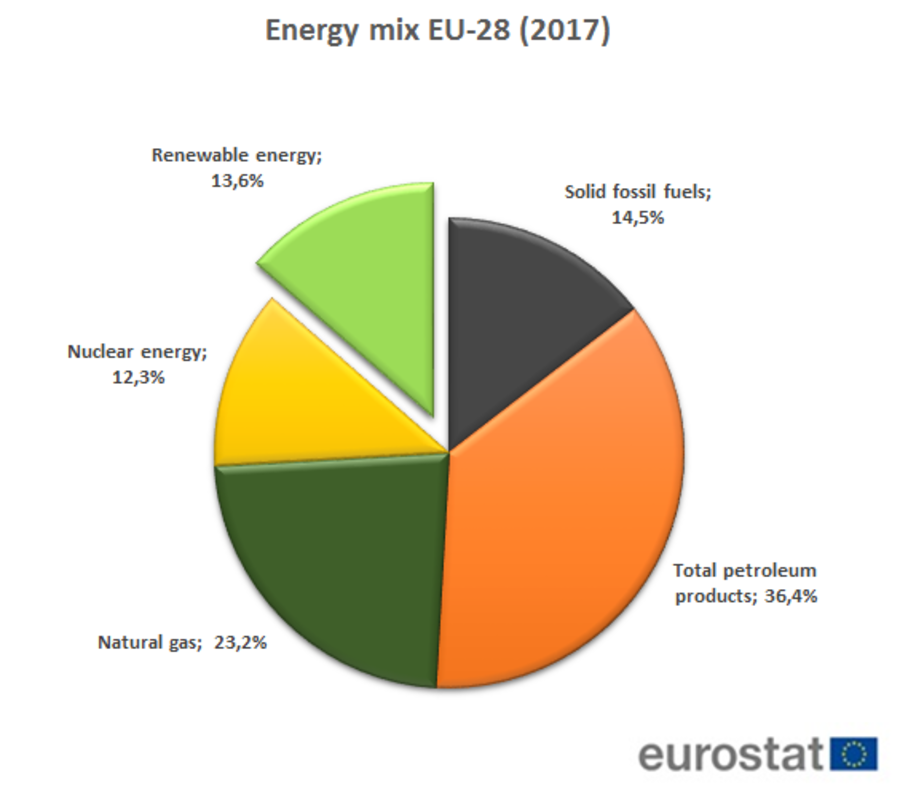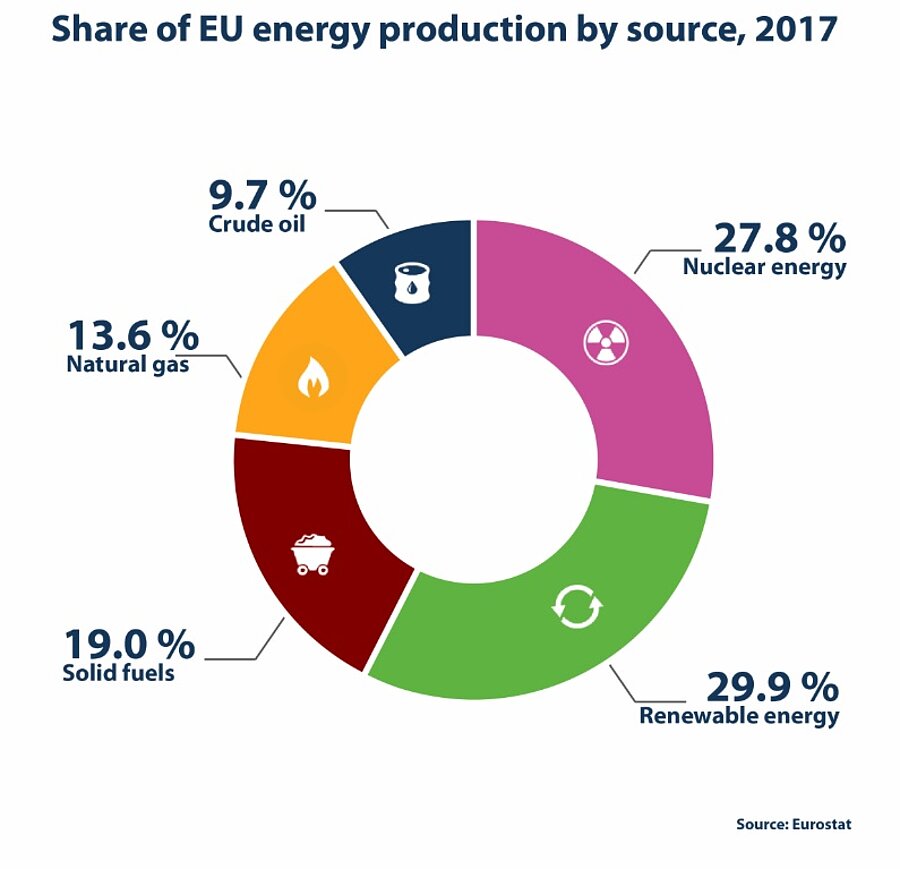

The share of RES-based energy products in gross energy inland consumption in the EU-28 (2017) amounted to an average of 13,6%. Gross inland consumption is the total energy demand of a country/region including consumption by the energy sector itself, distribution and transformation losses and final energy consumption by end users. It does not cover energy (fuel oil) provided to international maritime bunkers (Eurostat).
Source: Eurostat and European Commission
https://ec.europa.eu/eurostat/cache/infographs/energy/bloc-3a.html
https://ec.europa.eu/eurostat/statistics-explained/index.php/Glossary:Gross_inland_energy_consumption


The share of renewable energy in EU gross final energy use, including electricity, heating and cooling, and transport, was 17,4% in 2017. It has considerably increased since 2005 but in recent years there was a slowdown due to increasing energy consumption and lack of progress in the transport sector.
Source : European Environment Agency (EEA)
https://www.eea.europa.eu/data-and-maps/indicators/renewable-gross-final-energy-consumption-4/assessment-3
On the supply side, things look different: 29,9% of energy production in the EU comes from RES. In 2017, EU imports in the form of petroleum products, gas and solid fossil fuels covered 55% of EU’s energy needs. Therefore, meeting EU energy needs with decentral generation from RES in the electricity, heat and transport sectors is needed to decarbonize the economy in line with policy goals, but also to reduce EU’s currently high energy dependency and improve its security of supply.
Source: Eurostat and European Commission
https://ec.europa.eu/eurostat/cache/infographs/energy/bloc-2c.html